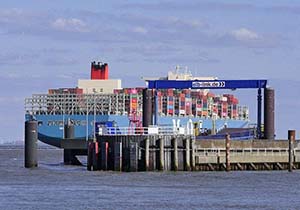Maritime transport: the race towards gigantism
Their ever-growing size has become a source of concern for the maritime transport market and in particular for insurers who are required to deal with increasingly higher risks and increasingly higher insured values.
Maritime transport: new generation of mega-container ships
 In 1999, the largest container ship had a capacity of 7 200 TEU. According to a study published at the same time, it would be impossible for shipowners to build vessels of more than 18 000 TEU.
In 1999, the largest container ship had a capacity of 7 200 TEU. According to a study published at the same time, it would be impossible for shipowners to build vessels of more than 18 000 TEU.
This assertion was quickly dismissed, since in 2020, of the 5 371 container ships serving the world's shipping lanes, more than 100 have a tonnage of more than 20 000 TEU. In addition, nearly a quarter of the ships currently under construction in Chinese and South Korean shipyards exceed 24 000 TEU.
In May 2020, Korean shipowner Hyundai Merchant Marine was delivered the largest container ship ever built. Built by South Korea's Daewoo Shipbuilding and Marine Engineering (DSME), HMM Algeciras holds the world record in terms of capacity with 23 964 TEU.
HMM Algeciras is inaugurating a series of twelve other mega-ships that will soon leave the shipyards.
It is therefore unlikely that this frantic race to gigantism is about to stop at this stage. A project to build a 25 000 TEU container ship is already underway by the Chinese shipbuilding group Hudong-Zhonghua Shipbuilding.
At this rate, we are not far from seeing 30 000 TEU monsters cruising the oceans before the end of the decade.
Read also | Top 10 of the largest cruise boats
